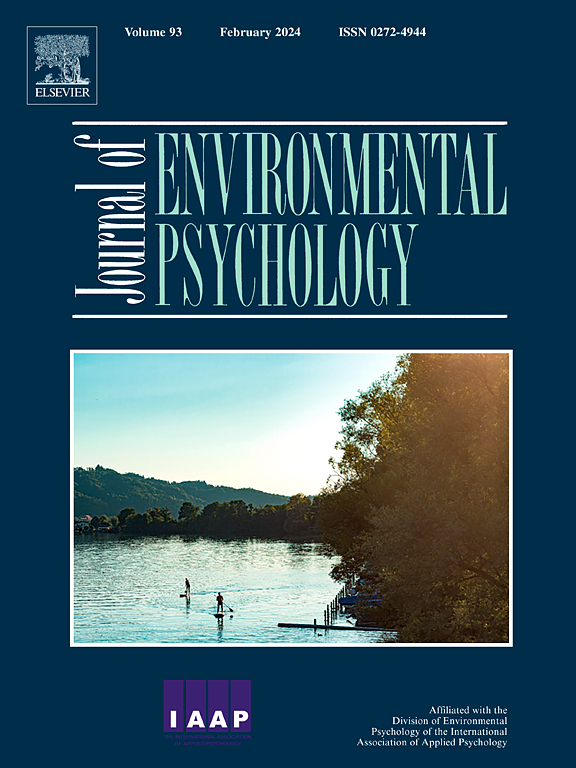Promoting collective climate action and identification with environmentalists through social interaction and visual feedback in virtual reality
IF 6.1
1区 心理学
Q1 ENVIRONMENTAL STUDIES
引用次数: 0
Abstract
Social interaction is theorized to be a key mechanism for crystallizing environmental identities, encouraging individual and collective action, and driving societal shifts toward sustainability. This preregistered lab-in-the-field study utilizes multiuser immersive virtual reality (VR), which allows individuals to interact verbally and non-verbally in a shared virtual environment, to investigate these processes in a controlled setting. High school student participants (255 tested, 194 analyzed) were randomly assigned to one of three conditions: (1) social interaction with environmental feedback, (2) social interaction only, or (3) no social interaction and no environmental feedback. In dyads, all participants engaged in a virtual sustainable cooking task, working either collaboratively (conditions 1 and 2) or in parallel without interaction (condition 3). Environmental feedback was provided by dynamically visualizing the impact of food choices. Results indicated that social interaction enhanced social identification with climate-action supporters. Environmental feedback, in combination with social interaction, further amplified these effects, leading to higher collective action intentions and feelings of hope. Although social interaction with feedback resulted in higher intentions to reduce meat consumption compared to social interaction only, no direct effects on objectively assessed behavior were observed. Social identification with climate action supporters was significantly correlated with all behavior-related measures. This study demonstrates the utility of multiuser VR as an experimental tool for investigating social interaction and as a practical tool for engaging students in sustainability. Theoretically, the results highlight the importance of interaction in social identification, which can be enhanced through visualization and feedback to promote collective action.
求助全文
约1分钟内获得全文
求助全文
来源期刊

Journal of Environmental Psychology
Multiple-
CiteScore
10.60
自引率
8.70%
发文量
140
审稿时长
62 days
期刊介绍:
The Journal of Environmental Psychology is the premier journal in the field, serving individuals in a wide range of disciplines who have an interest in the scientific study of the transactions and interrelationships between people and their surroundings (including built, social, natural and virtual environments, the use and abuse of nature and natural resources, and sustainability-related behavior). The journal publishes internationally contributed empirical studies and reviews of research on these topics that advance new insights. As an important forum for the field, the journal publishes some of the most influential papers in the discipline that reflect the scientific development of environmental psychology. Contributions on theoretical, methodological, and practical aspects of all human-environment interactions are welcome, along with innovative or interdisciplinary approaches that have a psychological emphasis. Research areas include: •Psychological and behavioral aspects of people and nature •Cognitive mapping, spatial cognition and wayfinding •Ecological consequences of human actions •Theories of place, place attachment, and place identity •Environmental risks and hazards: perception, behavior, and management •Perception and evaluation of buildings and natural landscapes •Effects of physical and natural settings on human cognition and health •Theories of proenvironmental behavior, norms, attitudes, and personality •Psychology of sustainability and climate change •Psychological aspects of resource management and crises •Social use of space: crowding, privacy, territoriality, personal space •Design of, and experiences related to, the physical aspects of workplaces, schools, residences, public buildings and public space
 求助内容:
求助内容: 应助结果提醒方式:
应助结果提醒方式:


